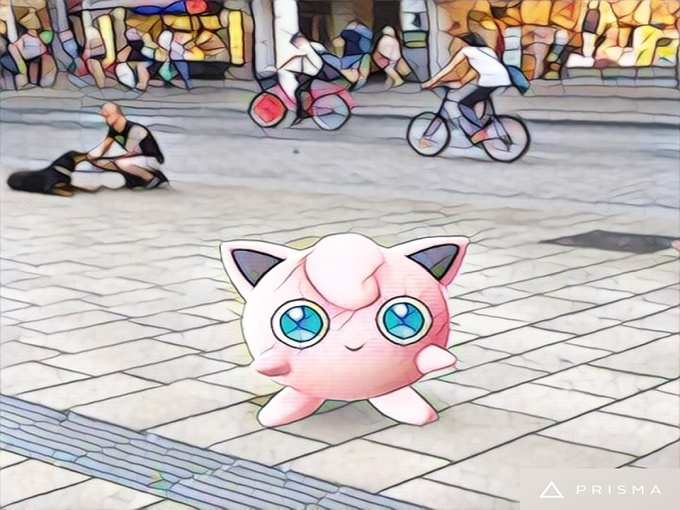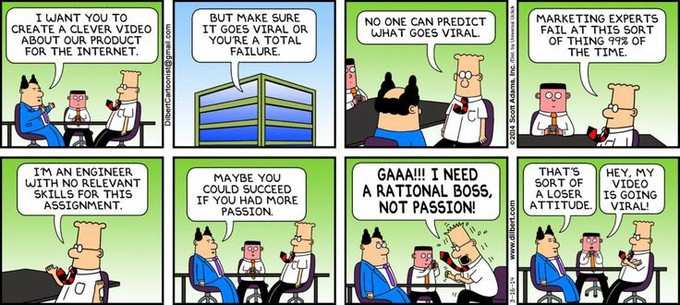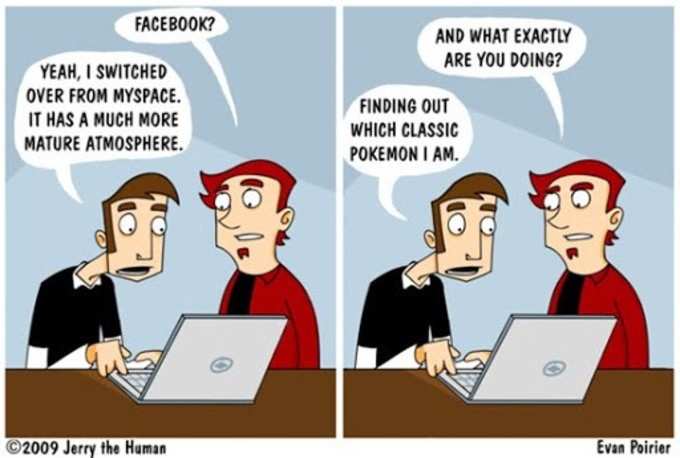
By now, much has already been said, and written, and experienced, about the two apps that have been making the headlines in the last couple of months (i.e. ever since they released) : Pokémon GO and
To state the obvious,
Apart from the more common usage of the term in movies and music, the pharmaceutical industry reveres its blockbusters (A blockbuster drug is one that generates more than $1 Billion in annual sales) and so does the gaming industry (Think of Angry Birds, Candy Crush & Temple Run before Pokemon GO ever happened). Harry Potter, iPhone, Tesla are also examples of the fact that Blockbusters take many forms.
While our own affinity towards our favourite (or most recent) Blockbuster may make us feel otherwise, the truth is that in most cases it is near impossible to spot a Blockbuster a priori.

Image source
(Should you disagree, I would love to read your thesis on how you would have predicted, before its release, that Gangnam Style would become the most viewed video on YouTube)
With that said, an exercise in pattern recognition is an enticing proposition for most VCs, and in this post, I look at 3 ( or is it 4?) features that
seem to set Blockbusters apart.
Aspirational
Soon after Viagra’s launch, TIME magazine ran a story on the pill titled ‘The Viagra Craze’ in which Bob Guccione, publisher of Penthouse magazine, prophesied that the drug will :
“…free the American male libido from the emasculating doings of feminists. ….and the ability to have sex by older men will make them
healthier and live longer. It will fool the biological clock when men are still active in the later years. It is a very significant effect of the drug that many haven’t contemplated.”

Image source
Coming from the Publisher of the Penthouse Magazine, the dream of everlasting youth and good times is an aspiration too potent for a lot of men to resist.
Viagra’s annual sales peaked at $2 Billion while Pfizer (The makers of the drug) predicted that the best case would be $500 Million.
Blockbusters are able to trigger aspiration to powerful and unpredictable effect.
Other examples of aspiration driving a Blockbuster’s adoption and growth , include :
• The “Gangnam Style” video was a parody of Gangnam, Seoul’s most expensive and most exclusive neighbourhood
• People have always to get their portraits done. A desire served well, both by selfies and the Prisma app (More on this later in this post)
• In the beginning of the 20th century, cars were nothing more than a rich man’s horse, until the Ford Model T came along in 1908 with Henry
Ford boldly calling out its mission as “ “This car will be so low in price that no man making a good salary will be unable to own one.”
• And what would explain the Pokémon GO hysteria ? The prestige that comes with catching them all, and the fear that the Pokémon “might get away!”.
Scarce and Imitable
After its triumphant launch for Apple users, there was much excitement for Prisma’s launch on the Android Play store.
Within just a matter of days though, it was found that over 1.5 Million users had downloaded fake versions of the Prisma app, much the same way that large numbers of users had downloaded fake Pokémon GO apps.
If you have searched for
Outside the world of apps, the proliferation of “fake iPhone” manufacturers in China has now become a well-known and well-accepted fact, one that many believe has in fact helped build Apple’s brand awareness in China.
Imitation, of course, can take many more forms, as Duck face selfies and Fish gape selfies constantly remind us.
They say imitation is the sincerest form of flattery.
Might this be corroborated by the observation that scarcity tends to heighten the demand of a Blockbuster ? And is it possible that imitations of a Blockbuster actually do it more good than harm, by extending its access ?
So much for Porter’s five forces and what it taught us about barriers to replication being a good thing.
Technological Relevance
Duck face sefies got me doing some research on the origins of the modern selfie.
From 2006 to 2009 (back when MySpace existed), the term ‘MySpace pic’ described an amateurish, flash-blinded self-portrait, often taken in front of a bathroom mirror. Self-portraits shot with cell phones, or “selfies” — cheap-looking, evoking the MySpace era — became a sign of bad taste.
Facebook, on the other hand emphasized photos that were presented in crisp focus. Owing to cameras’ technological limitations, a well-focussed photograph was typically taken from at least three feet away, by another person.
The subject of the MySpace bathroom selfie — with its tableaux of bathroom counter, mirror, face, and upper body — always looked alone. Selfies were for people without friends; the savvy moved on to the more advanced network — Facebook.

Image source
Facebook conquered MySpace because it distanced itself from the Selfie.
Yeah, that happened.
Selfies came back with a bang when the iPhone4 became the first iPhone to introduce a front-facing camera, a feature that is now a staple of every smartphone.
Selfies, and therefore Instagram, Snapchat, and now Prisma could not have become Blockbusters before the front-facing camera became ubiquitous.
What if cellphones with front-facing cameras had been mass produced while MySpace was still alive ?
What if…
Cover Image Source
About the author: Shubhankar Bhattacharya is a Venture Partner at Kae Capital, an early stage VC fund. He can be reached via his LinkedIN profile.